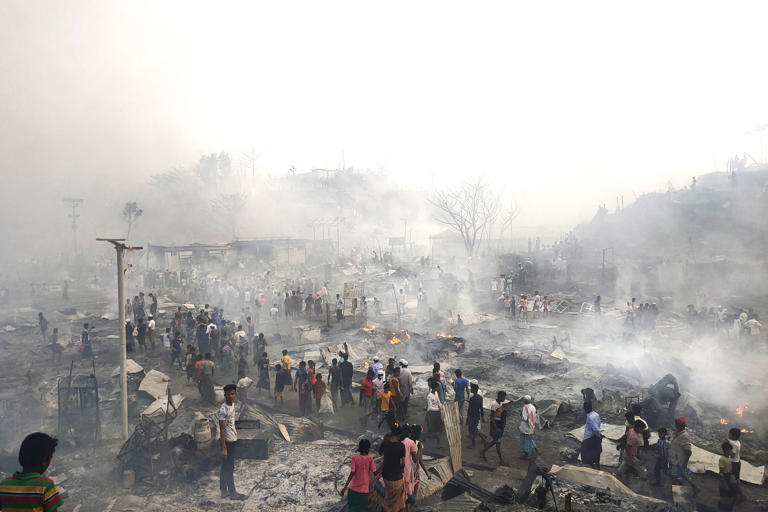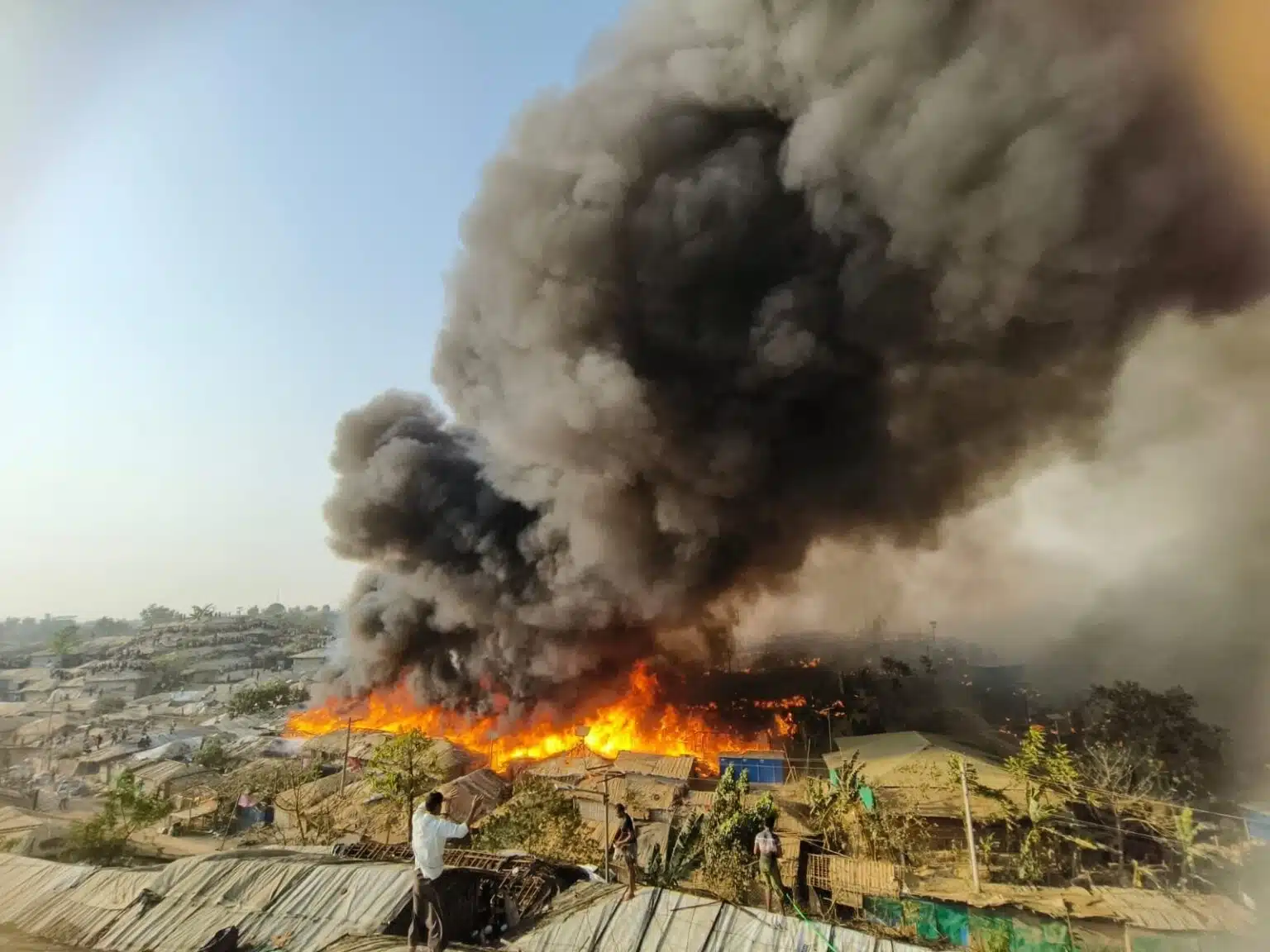A large fire ravaged the Rohingya refugee camps in southeast Bangladesh, forcing approximately 12,000 people to flee, according to authorities. The incident occurred as conditions in the Kutupalong giant camp, which itself is home to about a million Rohingya, are getting poorer. The vast majority of these individuals got there after fleeing a cleansing mission by the Burmese military in 2017.

12,000 Rohingya refugees are forced to flee a campfire that rages in Bangladesh. Image from Washington post; Mahmud Hossain OPU/AP
There have been no recorded injuries, nevertheless, according to officials, the fire on Sunday devastated 2,000 shelters after getting stronger through household gas cylinders.
Law enforcement agencies are looking at whether the fire was intentionally set. So according to local media, one person has been detained.
The settlement in the southeast is claimed to be the oldest refugee camp on earth.
The overwhelming fraction of its more than a million Rohingya refugees lived after fleeing persecution in neighbouring Myanmar.
Several people visited the Cox’s Bazar district again on Monday to see what they could save from the ruins. An official confirmed that the fire was put out at about 14:45 local time on Sunday and spread fast to the bamboo and tarpaulin shelters.
According to Mijanur Rahman, Bangladesh’s refugee commissioner, around 12,000 forcibly displaced Myanmar nationals are now homeless after 2,000 shelters were burned down.
After three hours, the fire was put out, but at least 35 mosques and 21 refugee learning centres perished in the process, he added.
The camp has experienced “serious harm,” according to Hrusikesh Harichandan of the International Federation of Red Cross and Red Crescent Societies, who spoke to the international press. He claimed that essential services including water treatment facilities and testing labs had also been impacted.
“My property was ruined.” Mamun Johar, a 30-year-old Rohingya man, told reporters. He further added, “[My store] was also torched. Everything was snatched from me after the fire.”
One of the various campsites in the border district, Camp 11, was observed rising above dense dark clouds.

Image from Washington Post by Mahmud Hossain Opu/Ap @ copyrights
Rohingya refugees
With the “giant camp‘s” currently loaded conditions, it will be impossible to evacuate the estimated 12,000 fire victims, as per Hardin Lang of Refugees International.
It would be difficult to provide basic amenities to those individuals in other portions of the encampment because so much infrastructure, particularly schools or health centres of care, has been destroyed.
While speaking to the media the resident stated that was an acute catastrophe for a population that had become chronically particularly prone and fatally placed.
The camps are prone to fires because they are crowded and filthy.
At least 15 victims perished as well as about 50,000 people were compelled to leave their homes in March 2021 after a massive fire destroyed a camp on the inside of the colony.
Those staying in the camp are refugees who left Myanmar when the military clamped down on the Rohingya marginalised communities.
The Rohingya are Muslims who live in Myanmar, which is primarily Buddhist, and have long been oppressed.In August 2017, as Myanmar’s military brutally retaliated after a Rohingya insurgent group attacked various police installations, the most significant exodus of Rohingya fled to Bangladesh.
After three hours, the fire was put out, but at least 35 mosques and 21 refugee learning centres succumbed in the way, he added. After the photographs came out of the site that illustrates the severity of the carnage is now starting to resurface.
Many of the residents can be seen rummaging around the burned area, where all that is left are metal columns and singed corrugated roofs.
For many years, humanitarian groups and authorities from various donors including the United States have lobbied with Bangladesh to provide them authorization to rebuild the camp’s outdated shelters with more secure structures that can survive monsoon rains and dry season fires.
Asserting that the shelters don’t need to be renovated because they are intended to be temporary, the government has continuously rejected that petition.













